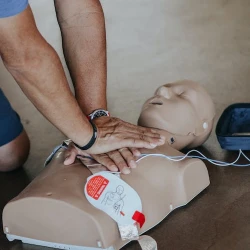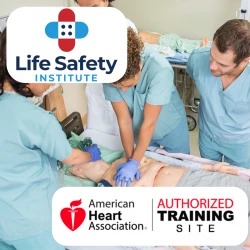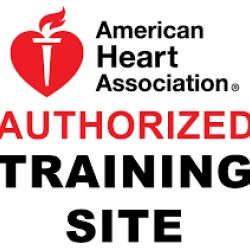Introduction
The Life Safety Institute in New Hampshire is committed to providing comprehensive and high-quality training in emergency medical services. Its programs have been specially designed to bridge the gap between various healthcare professions and the field of emergency medical services.
This article outlines how licensed RNs, PAs, MDs, and DOs can take advantage of the Life Safety Institute’s specialized bridge program to transition into the field of emergency medical technology (EMT). These professionals, with their existing medical knowledge and skills, can greatly benefit from this specially designed program, allowing them to integrate into the world of pre-hospital emergency care.
The Importance of Bridging Programs
Bridging programs like the one offered by the Life Safety Institute are essential in the ever-evolving field of healthcare. They enable healthcare professionals to expand their scope of practice and adapt to the diverse and dynamic nature of medical emergencies. The bridge program leverages the existing knowledge and skills of RNs, PAs, MDs, and DOs, facilitating a smoother transition to the EMT role.
The Bridge Program Structure
Assessment of Current Skills and Competencies
The program has assessed the existing skills and competencies of licensed RNs, PAs, MDs, and DOs. Since they come from a strong medical background this bridge program can focus on EMS operations and knowledge.
2. Tailored Curriculum
The Life Safety Institute offers a tailored curriculum designed to meet the unique needs of healthcare professionals transitioning into the EMT field. The curriculum integrates prior knowledge with new concepts required for emergency medical service.
3. Hands-On Training
Practical hands-on training is provided, with simulations and real-world scenarios that help in honing the skills necessary for pre-hospital care. The training includes work on ambulances and in emergency settings.
4. Mentorship and Support
Experienced EMTs and educators provide continuous support and mentorship throughout the program. They guide the candidates, ensuring that they are well-prepared for the EMT role.
5. Certification and Licensing
Upon successful completion of the program, candidates are eligible to sit for the National Registry of Emergency Medical Technicians (NREMT) exam. Upon passing the exam, they can obtain state EMT licensure.
Benefits of the Bridge Program
-
Efficient Transition: The program offers an efficient pathway for RNs, PAs, MDs, and DOs to become EMTs, recognizing their existing competencies and providing focused training.
-
Flexibility: The Life Safety Institute’s bridge program is flexible and accommodates the busy schedules of healthcare professionals.
-
Comprehensive Training: The program offers a well-rounded education, including theory, hands-on practice, and clinical experiences, ensuring the students are fully prepared for their new roles.
-
Community Impact: By enabling these professionals to become EMTs, the bridge program contributes to the community by increasing the number of skilled emergency medical responders.
Conclusion
The Life Safety Institute’s bridge program is a vital pathway for RNs, PAs, MDs, and DOs who are looking to transition into the field of emergency medical technology. It recognizes their existing medical expertise and builds upon it, providing them with the skills and knowledge required to excel as EMTs.
For those interested in expanding their medical career and playing a vital role in emergency medical services, the Life Safety Institute offers an opportunity to achieve this goal. The bridge program is not only an educational advancement but a call to action to serve the community in a new and impactful way.





